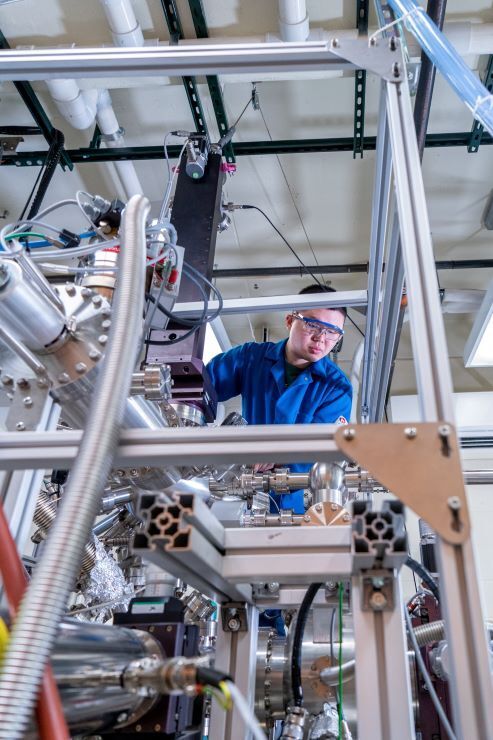About

NDRL Mission Statement
To enhance knowledge, understanding, and utilization of the effects of ionizing radiation on chemical systems
Strategic Objectives
Conduct basic research into the fundamental chemical processes induced by ionizing radiation.
Offer access to unique irradiation facilities and opportunities for worldwide collaborative investigation.
Educate the next generation of undergraduate, graduate, and postdoctoral researchers in radiation chemistry.
Disseminate the accumulated and evaluated knowledge database as a service to the general scientific community.
The Laboratory
The NDRL has a long history, dating back to the Manhattan Project, when a high-energy electron accelerator owned by the Physics Department at Notre Dame was commissioned as a radiation source mainly to investigate radiation hardness of materials. The research from this period, both inside and outside of the Manhattan Project, provided a solid foundation for the beginnings of a permanent radiation chemistry program at the University of Notre Dame.
The present Radiation Research Building was dedicated on September 1, 1963, and the NDRL was recognized as an Institute of the University in September of 1966.
In the 1970s radiation research at the Bushy Run Laboratories of the Mellon Institute in Pittsburgh was merged with the NDRL. Our mission was subsequently expanded to include the complementary discipline of quantitative photochemistry with research then mainly focused on nanosecond time-resolved studies in the solution phase. Pulsed techniques included optical absorption and emission, conductivity, vibrational resonance Raman, and electron paramagnetic resonance spectroscopies of transient species.
Experiments in the 1980s started to address effects in heterogeneous systems, prefacing the emergence of quantitative nanoscience investigations and our drive to understand and improve solar energy conversion. Ultrafast phenomena were first tackled in the 1990s with laser-driven experiments in the femtosecond time domain. The new century has seen the introduction of novel irradiation sources, atmospheric pressure plasma jets, and several state-of-the-art interrogation schemes such as near-ambient-pressure X-ray photoelectron and optically detected magnetic resonance spectroscopies.
The interdisciplinary structure of the Laboratory has continued to attract faculty and research associates from many areas of study including chemistry and biochemistry, physics, and chemical and biomolecular engineering. Emphasizing our significance on the world stage, postdoctoral researchers, visiting graduate students, and visiting scientists come from all continents to access our unique array of instrumentation. This, coupled with extensive in-house experimental and theoretical expertise, is what makes the NDRL a world-renowned center for both radiation chemistry and solar photochemistry.
The Notre Dame Radiation Laboratory is a part of Notre Dame Research.